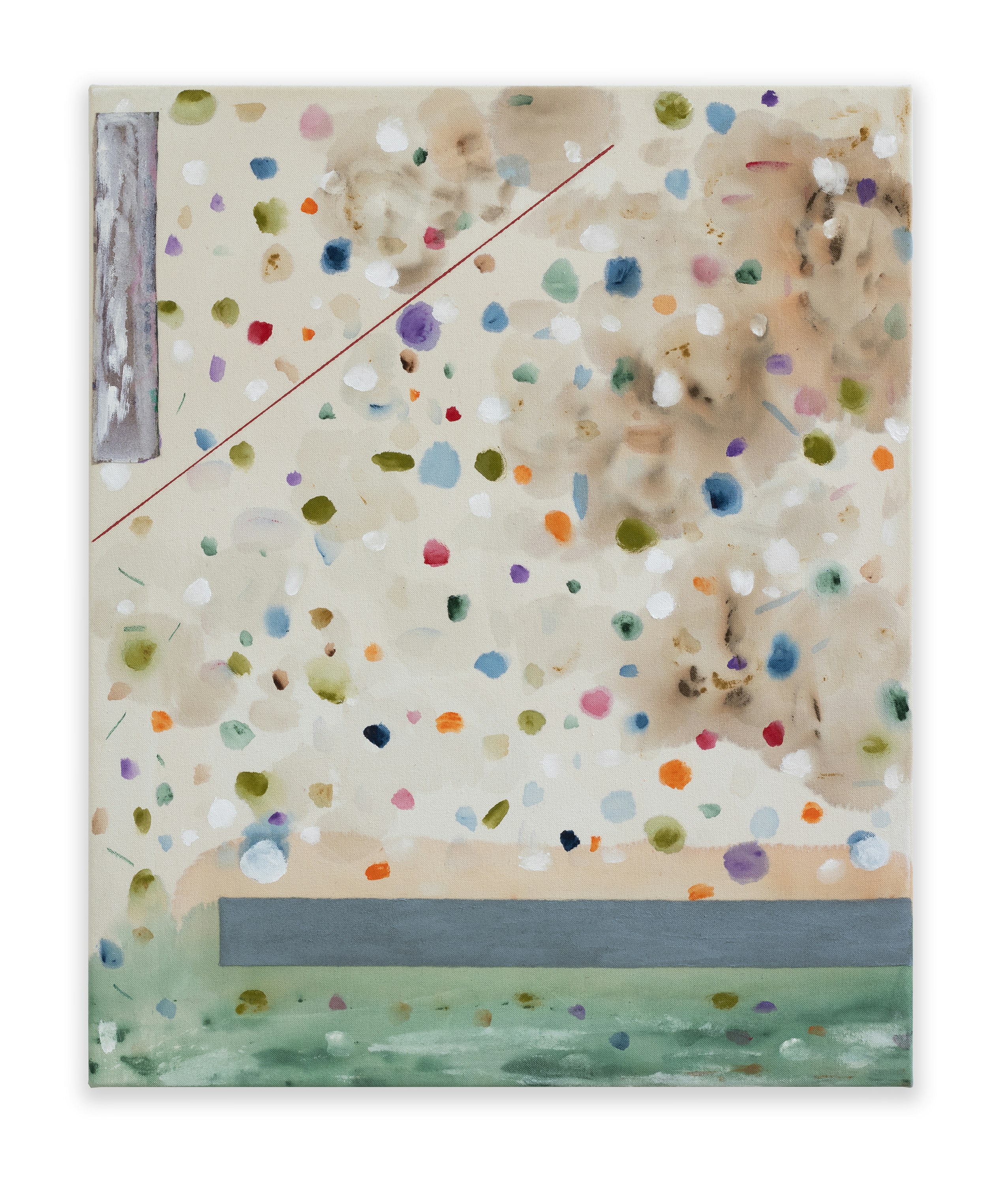
Baratze - Immanence, 2022, acrylic, oil paint and collage on cotton duck, 73 x 60 cm.
Descartes and the Fly
Baratze - Immanence raised thoughts about measurement as a human construct, and the paradox of human attempts to measure the organic world, the contrast of human vectorial lines and natural brush marks. This text is my version of the myth of the origins of coordinate geometry.
Rene Descartes liked to stay in bed until late, as a young man he took part in the Thirty Years War, changing sides and eventually settling in Breda. One late morning he was watching a fly on the ceiling cross beams from his bed. He wondered how best to describe the fly's progress and decided that if one of the corners of the ceiling could be used as an Origin 0.0, then he could describe the location by its distance from the walls of the room. He watched the fly for a long time. When he got out of bed, he wrote down what he had discovered. Descartes had invented the coordinate plane, sometimes called the Cartesian plane, in his honour.
Using an X horizontal and Y vertical axis, Descartes could define everywhere by a set of numbers. The ‘origin’ is a starting point, source, inception, the point at which something begins its course or existence. Origin applies to the things or persons from which something is ultimately derived and often to the causes operating before the thing itself comes into being. In this revolutionary application of algebra to geometry, even unknown places were no longer boundless; Descartes was applying measurement to mystery.
In 1649, Descartes accepted an invitation from Queen of Sweden to be the royal tutor. Unfortunately for Descartes, the queen expected to be tutored while she did her exercises at 5:00 a.m. in an unheated library. Descartes had been used to a lifetime of sleeping late, and the new routine was too rigorous and after only a few weeks he contracted pneumonia and died.
© Mark Joyce, Dublin, July 2023